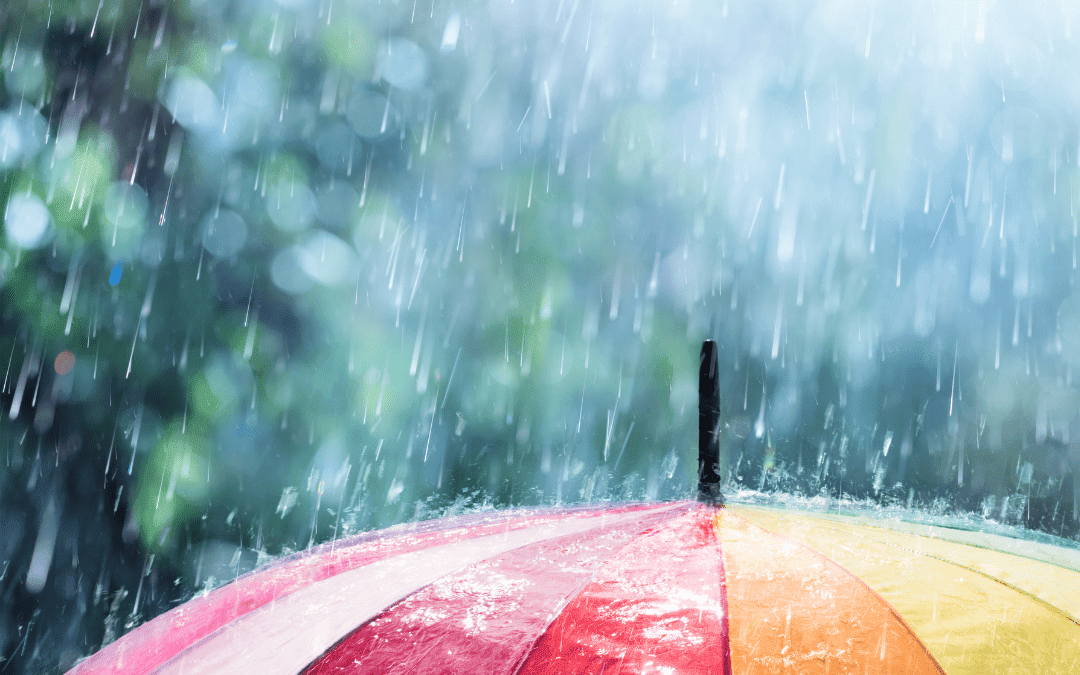Top rain activities for KS2 by Muddy Teacher Jacki
Getting KS2 children learning in the rain is easier than remembering your ABCs (when you’re the teacher)!
A rainwater gauge can be made using an old plastic bottle. Cut around the bottle about two-thirds of the way up. Then, turn the top part of the bottle upside down and place it in the bottom part, attaching the two pieces together with tape.
Add a scale to the bottle and then place it outside so the children can see how much rain they can collect. This can be linked to science learning.
Find more rain-related lesson here.
Boat races are lots of fun, particularly when done in the rain! Pupils can make their own boats and race them in long puddles. Tie some geography into this activity by asking them to label their puddle as a river!
Capacity and estimation can be taught by simply giving the children a variety of containers and getting them to observe how much rain falls into them. Which container fills the fastest, and why? Encourage the children to discuss their answers using mathematical terminology.
Dam building in a small body of running water is a fun exercise for your pupils to try out. Prompt them to think about which materials they think are most effective and why.
Embrace the weather and inspire your class to do a rain dance. Kick-start a beat by getting pupils to develop a rhythm using pots, pans and natural materials.
Flags can be created using calico or a cut-up old bed sheet. Ask pupils to dab felt tip pen colours on the material, and then let the rain do its magic as the ink spreads!
Grab a tarpaulin or a waterproof sheet, lay it on the ground and encourage the children to slip and slide. A much-loved activity for Year 6 pupils!
Hold a sound walk around the outdoor area. Weave the walk under trees and shelters, and listen for different rain sounds.
Inspire pupils to create their own outdoor paints using materials found in nature, such as petals and leaves. Children can squash them into a pot, add some rainwater, and then paint!
Jumping in puddles is good exercise, but it’s also fun, sociable and memorable. Many kids think that they’re too old to jump in puddles – encourage them to embrace doing this at school and enjoy being a child again!
Knowledge of the water cycle can be put in to practice on a rainy day. Can pupils create their very own representation of the water cycle outdoors?
Look for creatures and animals that appear when it’s raining. Get children to use magnifying glasses and investigate why they enjoy the rain so much.
Musical raindrops can encourage relaxation and mindfulness. Ask pupils to move pots and pans around the outdoor site while they listen to the rain falling on them.
No shoes or socks areas are a fantastic sensory experience for any age. Get those kids to kick off those socks and shoes and enjoy the liberating experience!
Oil and food colouring can be added to puddles to make fun colours. Can pupils mix these liquids into the puddles? Hand them a paintbrush and let them experiment with making different patterns.
Photographs are a fantastic way to engage older children in nature. Provide waterproof cameras or protected ICT equipment, and ask pupils to take natural rain pictures. This will make a fantastic display for your classroom!
Quiet time near a pond is lovely whilst it’s raining and is an excellent opportunity for children to observe insects and pond life.
Raindrops love to pitter-patter down windows. Can the pupils conduct a raindrop race?
Snow Angels are lots of fun but have your children ever tried making Mud Angels? Encourage your pupils to feel the mud and enjoy the sensory experience. Once they’ve finished, children can relax and watch the raindrops falling from the sky.
Tell stories under a canopy. There’s something magical about simply listening to the sound of raindrops falling and doing nothing else at all.
Umbrellas can be used to create perfect waterproof dens. Provide the pupils with a selection of sizes and some rope. What can they make?
Viaducts are bridges that carry railways or roads. Can the children create viaducts to position over some puddles?
Washing lines hang up wet natural materials. Get the children to make patterns or role-play whilst pegging out leaf monsters or Muddy handprints.
The sphinX is a mythological creature with the head of a human, falcon, cat, or sheep; the body of a lion and the wings of an eagle. Engage the pupils in building a sphinx statue using sand. The rain will help it solidify and stick together. Link this activity to Ancient Greek mythology to turn it into a history-based lesson.
Yummy mud pies and cakes can be created in rainy weather. Encourage the children to experiment with different recipes and make use of various ingredients.
Zig-zag patterns make great Muddy mazes. Ask the children to create a maze for a friend and then get them to use positional language to navigate a stone through it.
“The way I see it, if you want the rainbow you got to put up with the rain.” Dolly Parton
“Let the rain sing you a lullaby.” Langston Hughes
“You pray for rain, you got to deal with the mud too.” Denzel Washington. Well, we don’t mind Denzel – we love mud and so do children!
To find out more about rain head over to The National Geographic for some great information on the impact of too much rain.


